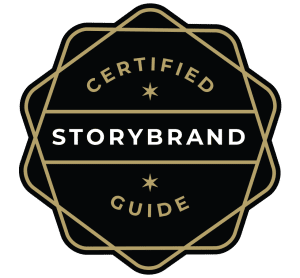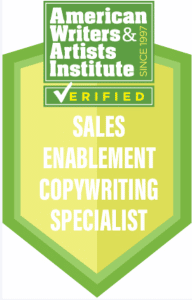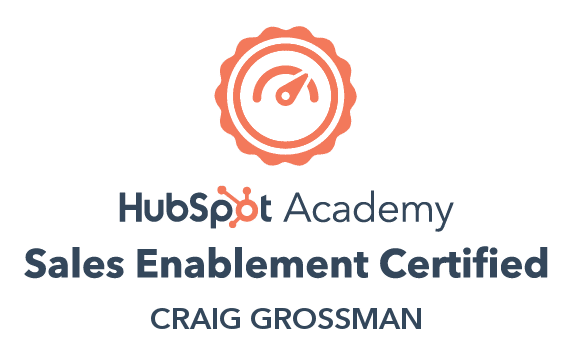
Use These Famous Sales Tactics To “Hit The Ball Out Of The Park” With Your Sales Copy!
Consumers like to think that they make up their own minds. That they make their own choices about what products and services they buy. But the truth is, they are often influenced into these choices, in ways large and small. Most of the time, they are unaware that they have been persuaded at all!
Robert Cialdini is a behavioral scientist and an expert on the subject of influence. He has done extensive research about buyer behavior and wrote a book that’s still a bestseller to this day called Influence: The Psychology of Persuasion.
Cialdini was tired of being a “patsy” and an easy mark for the pitches of salesmen, fundraisers, and other peddlers. So he decided to learn all the tricks of these salespeople and other influencers.
You might think there are dozens of ways that we are persuaded to buy things. But Cialdini discovered that they could all be boiled down to seven principle techniques of persuasion. All the rest are just variations on these seven themes.
You can use these methods in your sales letters, landing pages, emails, sell sheets, videos, case studies, testimonials, and other marketing materials to make a stronger case for your customers to hit the “buy” button.
So without further ado, here’s a brief explanation of each psychological inducement principle and how to use them to create better sales results:
1. Reciprocation, or the power of reciprocity. When someone gives a gift, you feel obligated to give something back to that person or organization.
- Example: A pharmaceutical rep buys lunch for everyone in a doctor’s office. So the doctor feels more obligated to prescribe the drugs the sales rep informs him about.
- How To Use This: Give away a free valuable report on your landing page, or extra free goodies with your main product. Some even give the product away for free to first-time buyers. Naturally, your customer will want to reciprocate and buy from you after receiving these “freebies.”
2. Liking and the “Halo Effect.” Consumers are more likely to buy from you if they like you, your company, or your products.
- Example: Used car salespeople will see camping gear in your current vehicle and exclaim, “Oh, I love to get out of the city to hike and camp whenever I can!” This statement makes you feel like you have something in common, so you’ll like the salesperson more, and increase the likelihood of buying a car from them.
- Example of the Halo Effect: Research in Canada has shown that attractive candidates in an election received more than two-and-a-half times as many votes as unattractive ones.
- How To Use This:
- Emphasize what you have in common with your potential customers in your sales copy.
- Show empathy for their difficulties or situations.
- Compliments can go a long way, such as congratulating her for being a “smart shopper.”
3. Social Proof. The concept that we are more likely to say “yes” to a proposal, recommendation, or purchase if we see many others like us have been doing so too.
- Example: True story – front-page stories in newspapers of suicides produce a subsequent increase in suicides in that area. They also create an increase in “accidental deaths” due to car and plane crashes. How can that be? Because a lot of the people who cause those accidents are committing secret suicides! They see other distressed people like them ending it all, so this makes it okay to follow suit.
- How To Use this:
- In sales copy, cite the number of people that have bought your product (“used and enjoyed by over 2000 businesses across the country!”).
- Use testimonials liberally in your sales materials (including the customer’s picture and name if possible).
- Examine your online product reviews, and follow up right away with the customer when a less-than-positive review shows up.
4. Authority. The benefits of a product or service are more believable if presented by an authority figure.
- Example: The spokesperson on the TV commercial for the latest prescription drug to help diabetics is wearing a white lab coat with a stethoscope around her neck. We trust doctors, especially when in uniform, so we believe what she says about the new drug and later ask our doctor about it.
- How To Use This:
- Find an actual authority on your subject (scientist, researcher, or another expert) to quote from. Or have him speak directly to your audience in your sales video.
- Using statistics to back up your product claims (“87% of users noticed significantly less pain after using our product”) goes a long way in building up the authority of your brand.
- From an SEO standpoint, having lots of well-written, in-depth content articles or blogs on your website will increase the trust and authority in your company and boost your website’s search rankings.
5. Scarcity. People have a stronger desire for items they can’t quickly get because of a natural or perceived scarcity of the product or service. This is related to FOMO, or Fear Of Missing Out.
- Example: A company that makes fine china could easily produce 50,000 units of a particular tea set design. But instead only makes 500 tea sets. The small amount made creates a perceived scarcity, so collectors are willing to pay much more for the set.
- How To Use This:
- In sales copy incorporate messages such as “There are only 200 spots available for this webinar, so be sure to reserve yours today!”
- Or emphasize the number of items available: “Only 1000 of these signature baseball bats were made, and they aren’t making any more!”
- If you have a popular item that was discontinued, consider a marketing promotion to bring it back with a “limited time offer.”
6. Commitment and Consistency. This is about our desire to be (and to appear) consistent with what we have already done. Once we have made a choice or taken a stand, we will want to behave consistently with that commitment.
- Example: Maintaining your religious affiliation, even though there is not a shred of evidence that confirms what you believe is true.
- Another Example: You tell everyone you know that you’re running your first marathon in just three months. Your public declaration shows your commitment to this goal and motivates you to train even harder.
- How To Use This:
- In your sales copy, present your most important benefit, along with compelling proof – first. This will create at least a modest commitment from your reader (“Wow, this product does sound fantastic!”), so she will read the rest of your sales letter.
- For your website, find a professional UX copywriter (yes, that would be me!) to help you create an enjoyable user experience for your audience. If your website is consistently easy to navigate, written with clarity, and answers all the reader’s questions well, they will be more likely to take the next steps with your company in their buying journey.
7. Unity. The groups we belong to or identify with can influence us. These could be your family, book club, sports team, or the state you live in, for example. If your “we” group makes a recommendation, we are more likely to act on that advice since it’s coming from “our” group.
- Example: You’re on a small fishing boat with your brother (who you don’t feel very close to) and your best friend. They both fall in during a storm, and there is only one life preserver. There’s no question who gets it – your brother! Because he is family and “one of us.”
- Another Example: Amazon product buyers are more likely to believe the reviews of someone who lives in their state – it’s true!
- How To Use This:
- Find satisfied customers to use in testimonials or case studies that potentially have the same groups in common with your target audience. As a result, they will be more believable to that audience.
- If you use paid influencers to promote your brand, be sure they have a lot in common with your target audiences.
- Get endorsements or sponsorships from large organizations that your customers belong to or can identify with positively. Examples of these are Habitat for Humanity, The Nature Conservancy, or your local Rotary Club.
Suppose you’re reading “between the lines” here. In that case, you can see how unscrupulous salespeople or perhaps shady politicians could use these seven categories of persuasion to convince you to buy products (or ideas) that maybe you don’t need after all.
Hopefully, now that you know how the rules of influence work, you won’t become a pushover for their high-pressure sales tactics again!
Of course, you can use these seven methods of persuasion ethically for your own marketing campaigns. Used effectively, you’ll create more substantial copy and content that is sure to bring in more business for your organization. And if you’d like some help with your company’s promotional copy and content writing, I’m here for you! Just send me a note about your needs here.
Get the Words That Will Help Your Business Win





